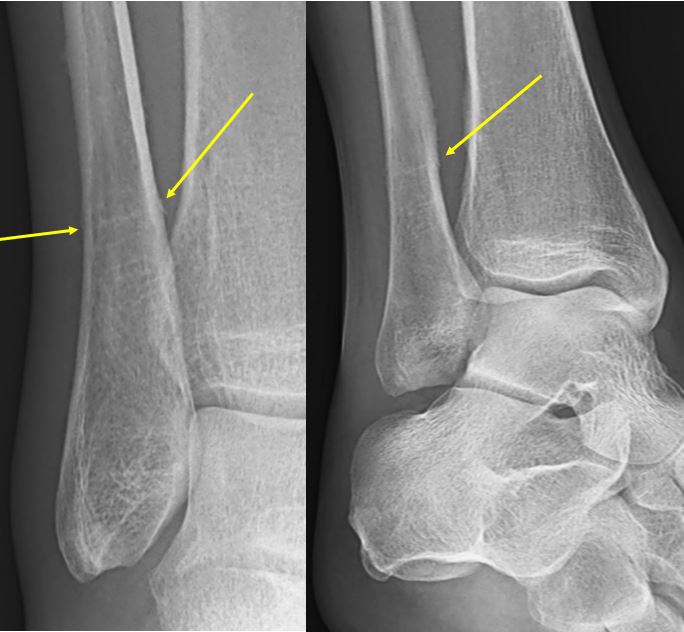Published on
Differential Diagnosis
- Compartment syndrome
- Fibular stress fracture
- Nerve entrapment syndrome
- Tendinopathy

Diagnosis
The images reveal a subtle cortical irregularity distal fibula suspicious for stress fracture. Radiographs are often negative in early stress fracture, but a hairline fracture line, cortical abnormality, and eventually periostitis can be present.
Learnings/What to Look for
- Reported incidence of stress fractures in athletes varies according to sport; however, track and field athletes have been reported to have the highest incidence of lower extremity stress fractures
- Fibular stress fractures among runners are estimated to account for 7% to 12% of all stress fractures, with females accounting for a higher incidence than males
- Excessive submaximal loading of normal bone without sufficient rest time results in greater osteoclastic than osteoblastic activity of the loaded bone. This leads to the development of microfractures, which is known as a stress reaction
- The bones with the greatest incidence of stress fractures include the tibia, metatarsal, fibula, tarsal, femur, and pubic bones
Pearls for Urgent Care Management and Considerations for Transfer
- Acetaminophen may be recommended for pain
- A stirrup leg brace or compression walking boot may be needed, depending on severity of the injury
- Advise the patient to cease running until symptoms have subsided
- Refer for physical therapy to strengthen supporting structures
Acknowledgement: Images and case presented by Experity Teleradiology (www.experityhealth.com/teleradiology).
A 45-Year-Old Female Runner with Lower Extremity Pain
1 2
